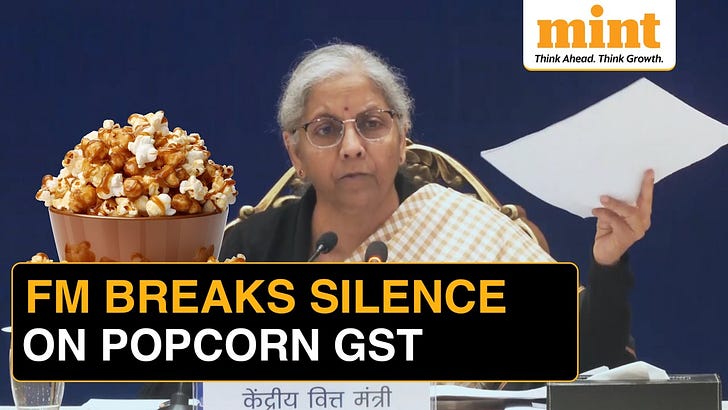India's Economic slowdown : Part 1
The Indian economy is not growing nearly as fast as it needs to
Over the last several months concerns have begun to emerge over the pace at which the Indian economy is growing.
Even the government’s own Economic Survey, released today, has expressed some concern. It has called for the need for ‘deregulation’. So, what is going wrong?
After achieving blockbuster growth rates of 9.7% and 8.2% post the COVID-19 pandemic, real GDP growth rate has slowed to 6.4% in 2024-25. In the second quarter of 24-25, the growth rate was 5.4%.
India’s finance minister Nirmala Sitharaman suggested that the growth appeared to have slowed because the administration was busy with elections and presumably did not have the time to spend money, or, in other words, did not have the time for governance. If we leave the brazenness of this comment aside, what she is trying to say is that the slowdown last year was a blip.
She is wrong. Last year’s slow down wasn't the blip. The blip, in fact, was the post pandemic growth rate.
That seemingly rapid growth was, in large part, because of the base effect as the economy contracted during the pandemic because it wasn't functioning at full capacity as restrictions were in place.
If you compare the performance of an economy working at, lets say, 70% of capacity to an economy working at 100% capacity, the difference will look spectacular.
The growth seemed spectacular also because there was pent up demand during the pandemic. People with disposable income could not spend as much as they would have liked because of restrictions on movement, etc. They came back with a vengeance post the pandemic to spend. But, that was a one time phenomenon and is not a long term trend.
Another commonly cited reason for the post pandemic growth is the establishment of global capacity centres, which perform high end offshore services work. They gave a lift to urban spending, a lot of it luxury spending, but even that growth has begun to fade.
That is about it. These reasons, led by the base effect, helped to taper over the sluggishness of the Indian economy (not by global standards but certainly sluggish given the rate of growth a poor country like India needs) and gave the impression that the Indian economy is the engine driving global growth.
If you dig deeper, as Roshan Kishore of the Hindustan Times did, you will find that a large proportion of the 9% and 8% growth rates actually came from growth in taxes.
His analysis found that India’s gross value added (GVA), which is GDP minus Net Indirect Taxes (NIT), and, therefore, a measure of the growth of actual production in the economy, has been around 7% for the last 3 years.
In 2023-24, for example, when the GDP growth rate was 8.2%, GVA only grew at 7.2%, while Net Indirect Taxes grew at 19%, the highest growth since 2009.
So, one part of the story is that the post pandemic growth rates should be taken with a pinch of salt.
The second part of the story is that India’s economy had actually shed some of its lustre as far back as 2017 when the impact of Prime Minister Narendra Modi’s absurd demonetisation move began to show in the data.
In the fourth quarter of 2016-17, the one right after demonetisation, qurtarerly growth rate slowed to 6% from almost 8%, earlier in the year. The full year growth for 2017-18 came in at 6.8%, down from more than 8% the year before.
Just as some of the businesses impacted by demonetisation were beginning to find their feet, the government dealt another crushing blow, the botched implementation of the Goods and Service Tax. The central idea behind having a single country wide GST was to simplify the sales tax regime by having one single tax across the country.
Instead, the government added layers of bureaucracy which added to the cost of compliance for businesses. It also decided to retain the power to tax different categories of items at different rates and often changed these depending on which state was going to polls. Example, GST on khakra (a crispy savoury snack from western India) was revised lower when elections were due in Gujarat.
A more recent example which might be fresh in the memory of some of you is the bizarre situation where salted and caramel popcorn attracted different rates of GST. Here is a fabulously funny clip of Sitharaman trying to explain the ‘rationale’ behind the move.
So, first demonetisation and then GST dealt a knockout blow to many Indian small businesses. An analysis found that the combined impact of demonetisation, GST and the pandemic was a loss of about Rs 11 trillion on the informal economy.
…End of part 1



